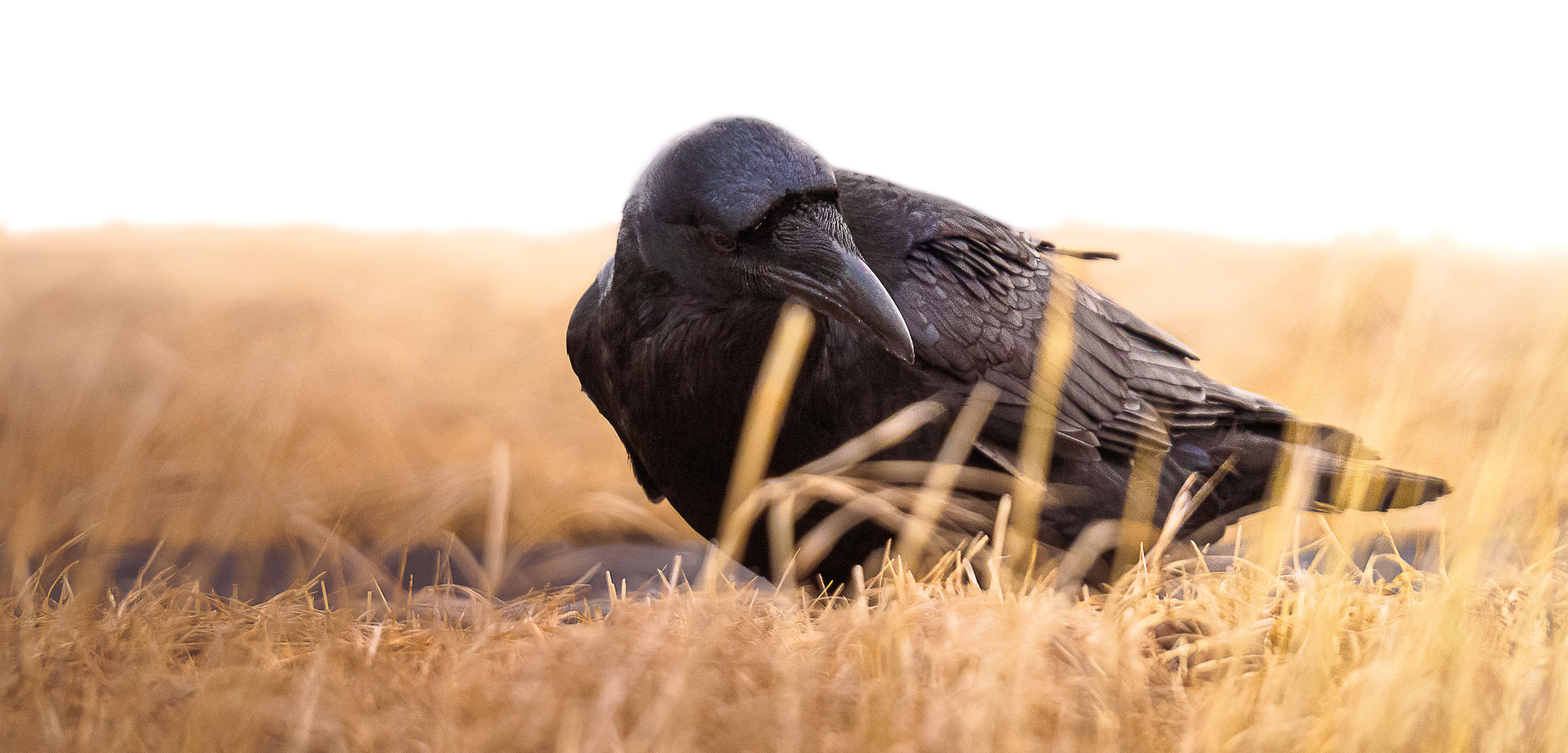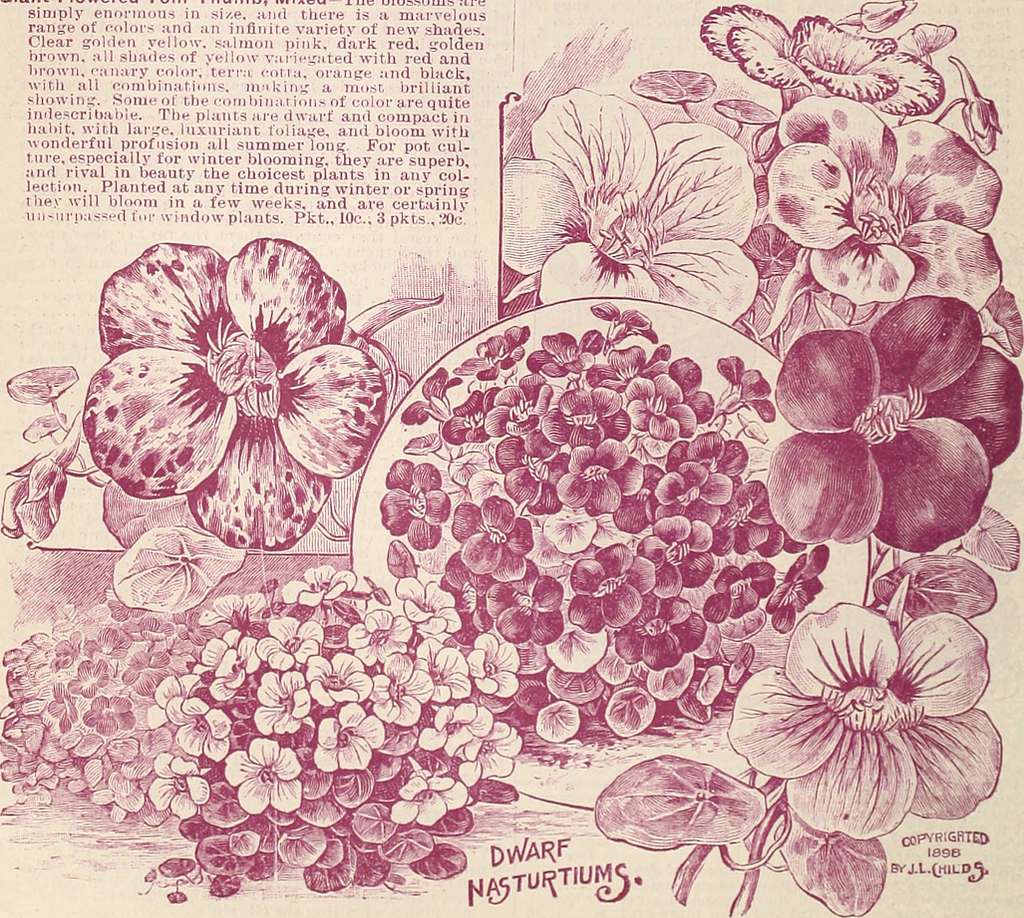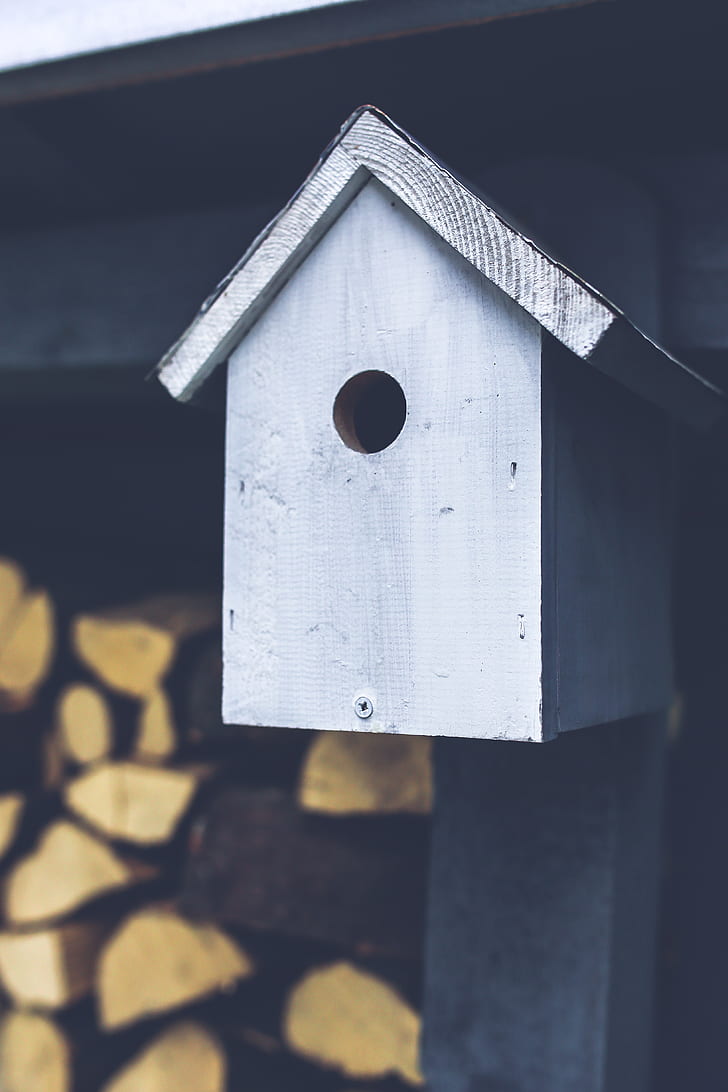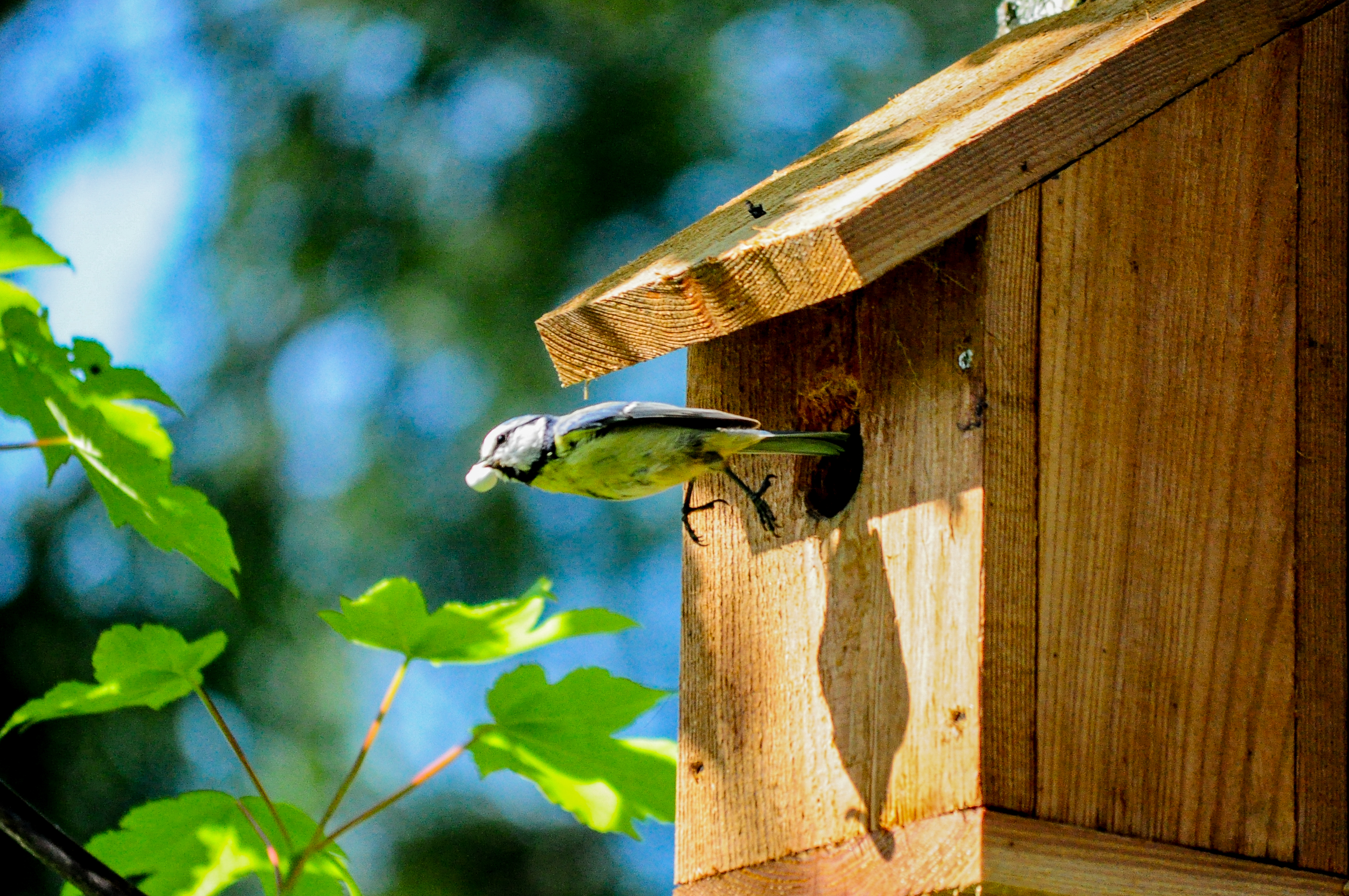Introduction: Bird Houses and the Importance of Attracting Birds

Bird houses, also known as nest boxes, are man-made structures designed to provide shelter and nesting sites for birds. They come in various sizes and designs, constructed using materials like wood, metal, or plastic. Attracting birds to these bird houses serves multiple important purposes.
Firstly, it contributes to the conservation of bird populations, especially for species facing habitat loss. Bird houses offer an alternative nesting option, particularly in urban areas where natural sites are scarce.
Secondly, attracting birds to your yard or garden provides natural pest control. Birds are natural predators of insects and pests, and by offering them a welcoming environment through bird houses, they can help control harmful populations that damage plants and crops.
Moreover, creating a bird-friendly environment allows for closer observation and a greater understanding of bird behaviors and interactions. The presence of bird houses attracts a variety of species, providing a rewarding and educational experience for bird enthusiasts and nature lovers.
Lastly, attracting different bird species to your bird houses contributes to overall biodiversity. Birds play crucial roles in pollination and seed dispersal, vital processes for maintaining healthy ecosystems. By providing suitable nesting sites and attracting a diverse range of birds, you actively promote biodiversity and support the ecological balance of your surroundings.
In the following sections, we will explore the impact of different colors on bird attraction and discuss the significance of blue, red, green, brown, and other colors for bird houses. Understanding bird species’ color preferences can help you create a bird house that maximizes attraction and enriches your bird-watching experiences.
Different Colors for Different Birds

Color preferences vary among bird species, and understanding these preferences is crucial for attracting specific birds to your bird houses. In this section, we will explore the impact of different colors on attracting birds and discuss which species are most drawn to each color.
Blue Bird Houses: Universal Appeal to Bluebird Species
Bluebird species, such as Eastern Bluebirds and Mountain Bluebirds, show a strong affinity for the color blue. Consider painting or selecting bird houses in shades of blue to attract these beautiful avian visitors.
Red Bird Houses: Allure for Hummingbirds
Hummingbirds are highly attracted to the color red. Incorporating red elements into your bird houses, such as painting the roof or adding red flowers nearby, can significantly increase the chances of attracting these delightful, nectar-loving birds.
Green Bird Houses: Harmonious Blend with Nature
Many bird species prefer nesting sites that blend with their natural surroundings. Green bird houses create a sense of camouflage, appealing to species such as sparrows, wrens, and chickadees. The earthy tones of green help the bird houses blend seamlessly into foliage, providing a safe and comfortable nesting environment.
Brown Bird Houses: Mimicking Natural Surroundings

Brown bird houses mimic natural surroundings and appeal to several bird species. Browns and earth tones create a sense of familiarity and security, making them attractive to birds like sparrows, wrens, and chickadees.
Other Colors: Orange, Yellow, Purple, and White
While blue, red, green, and brown are commonly preferred colors, other hues can also attract birds. Some species show an affinity for colors like orange, yellow, purple, and white. For example, orioles are attracted to orange, goldfinches to yellow, and purple martins to purple-colored bird houses. White bird houses provide a clean and crisp appearance that may attract a variety of bird species. Experimenting with these colors can broaden the range of species you attract.
Understanding the specific color preferences of bird species in your area is essential for creating bird houses that effectively attract and accommodate them. In the following section, we will delve into the importance of considering local bird species and their color preferences when designing bird houses.
Next Sections:
– Final Thoughts: Creating a Bird House That Attracts the Most Birds
– Conclusion
Blue Bird Houses: The Allure of Blue for Birds

Blue is a captivating color that holds a special allure for many bird species, especially bluebirds and swallows. In this section, we will delve into the reasons why blue is such an attractive color for birdhouses.
Natural Significance
Blue birdhouses seamlessly blend into the surrounding environment, creating an appealing nesting site for birds. The concept of natural camouflage instills a sense of security and comfort, attracting birds searching for a safe haven.
Enhanced Visibility
![]()
To the avian eye, blue stands out prominently against lush green foliage, making it easier for birds to spot and identify potential nesting locations.
Species Preference

Eastern bluebirds and tree swallows exhibit a natural affinity for the color blue. By incorporating blue into birdhouse design, we can cater to the specific preferences of these fascinating avian creatures.
Temperature Regulation
Blue has a cooling effect on birdhouses, helping to maintain a comfortable temperature inside, especially during scorching summer months. This benefits avian parents incubating eggs or nurturing their young.
Competitive Advantage

The choice of a blue birdhouse may offer birds a competitive edge in attracting mates or defending their territory. The distinct coloration can serve as a visual signal, indicating a prime nesting site.
By understanding the allure of blue birdhouses, we can effectively create environments that cater to the preferences and needs of our feathered friends. In the following sections, we will explore other colors that have proven attractive to birds and discuss their unique benefits.
Red Bird Houses: The Impact of Red on Attracting Birds

Red is a color that significantly impacts the attraction of birds to birdhouses. Here are some key reasons why red stands out and appeals to birds:
Visibility: Standing Out in Nature
Red stands out prominently against natural backgrounds, capturing the attention of passing birds. When a bird spots a red birdhouse, it perceives it as an intriguing object worth investigating.
Associative Significance: Mimicking Food Sources
Red is often associated with food sources in nature. By mimicking these natural food sources, red birdhouses create an attractive visual cue for birds, indicating potential nourishment.
Attracting Fruit-Eating Birds
Numerous fruit-eating bird species are naturally attracted to the color red. By incorporating red birdhouses into your backyard, you can specifically target these species and provide them with a desirable nesting environment.
Seasonal Attraction: Timing Matters
Red birdhouses can be particularly enticing to birds actively foraging for food during periods of abundant fruits, such as spring and summer.
Considering Local Bird Species
It’s essential to consider the preferences and behaviors of the bird species prevalent in your area. Conduct research to identify if local birds show a particular inclination towards red birdhouses.
By understanding the impact of red on attracting birds, you can strategically incorporate red birdhouses into your backyard to increase the likelihood of attracting a diverse array of bird species. In the next section, we will explore the benefits of green birdhouses and how this color can contribute to bird attraction.
Green Bird Houses: The Benefits of Attracting Birds with Green

When it comes to attracting birds to your backyard, the color of your bird house plays a crucial role. Green stands out as a highly attractive option for our feathered friends. Let’s explore the benefits of green bird houses and why they prove to be a magnet for avian residents.
Blending with Nature
Green bird houses create an environment that mimics birds’ natural habitat, making them feel more at ease and comfortable.
Sense of Safety and Camouflage
Green provides a sense of safety and camouflage for birds, allowing them to hide from predators and feel protected while raising their young.
Signaling a Suitable Habitat
Green signals the presence of food sources and a suitable habitat for birds, increasing the likelihood of attracting a diverse range of species.
Preferred by Certain Bird Species
Some bird species, like finches and warblers, have a strong preference for greenery and dense foliage, making green bird houses particularly enticing.
Attracting Insect-Eating Birds
Green bird houses attract birds that rely on insects as their primary food source, contributing to natural pest control in your garden.
Choosing the Right Shade of Green
To maximize attractiveness, choose a shade of green that closely resembles the natural greenery in your area.
Creating a Bird-Friendly Environment
Consider other bird-friendly features such as appropriate size, ventilation, and entrance hole dimensions to create a complete package that is highly attractive to potential avian residents.
By opting for a green bird house, you provide birds with a welcoming and secure nesting environment that blends harmoniously with nature and signals a habitat rich in resources.
Brown Bird Houses: Ideal Color for Attracting Birds

Brown is an ideal color choice for attracting birds to your bird house. Let’s explore the reasons why brown bird houses are so appealing to our feathered friends.
Natural Camouflage
Brown bird houses blend seamlessly with the natural environment, providing excellent camouflage and a sense of safety for nesting birds.
Mimicking Tree Cavities
Brown bird houses resemble natural tree cavities, appealing to birds seeking shelter and nesting sites.
Warm and Earthy Tone
The warm and earthy tones of brown create a sense of natural comfort, making brown bird houses visually appealing and inviting to birds.
Universal Attraction
Brown is a safe and neutral choice that appeals to a wide range of birds, enhancing the biodiversity and beauty of your bird-watching experience.
In conclusion, brown bird houses offer several advantages for attracting birds. Their natural camouflage, resemblance to tree cavities, warm and earthy tones, and universal appeal make them an ideal choice for bird enthusiasts. By providing a brown bird house, you create a welcoming and safe nesting environment that attracts a variety of bird species to your backyard.
Different Colors for Attracting Birds

Birdhouses come in various colors, each with its unique appeal to different bird species. While we have explored the attractiveness of blue, red, green, brown, orange, yellow, purple, and white birdhouses, let’s delve into their allure and how they can maximize bird attraction.
Orange: A Vibrant Hue for Avian Visitors
Orange captivates birds like orioles and tanagers, who associate it with delicious fruits. Incorporating orange elements, such as roofs or accents, creates an irresistible allure for these species.
Yellow: A Sunny Shade to Attract Avian Delight
Yellow symbolizes sunshine and warmth, attracting birds like goldfinches and warblers. Consider incorporating yellow elements, like paint or decorations, to create an inviting environment for these feathered friends.
Purple: A Unique Color to Catch the Eye of Hummingbirds
Purple may captivate hummingbirds, known for their attraction to purple flowers. Incorporate purple-colored roofs, doorways, or accents to provide them with a charming sanctuary.
White: A Versatile Shade for a Wide Range of Birds
White symbolizes purity and cleanliness, creating a sense of safety and sanctuary for birds. Maximize bird attraction by using white as the main color or incorporating white accents.
Birds are naturally drawn to various colors. By understanding the appeal of orange, yellow, purple, and white birdhouses, you can tailor your avian abode to attract specific species and enhance the diversity of winged visitors to your backyard.
Final Thoughts: Creating an Irresistible Birdhouse

Consider these key factors to create a birdhouse that attracts the most birds:
Size and Design
Research the preferences of your target bird species and tailor the birdhouse accordingly. Ensure appropriate dimensions and entrance hole size.
Location
Choose a quiet area away from human traffic and potential predators. Consider the habitat requirements of your target bird species.
Food, Water, and Nesting Materials
Provide an abundance of food, water, and nesting materials nearby. Plant native flowers and shrubs, install a birdbath, and offer nesting materials.
Maintenance and Cleaning
Regularly check for damage, clean out old nesting materials, and provide a clean and well-maintained birdhouse.
In conclusion, attracting birds involves factors such as color, size, design, location, and the availability of food, water, and nesting materials. By understanding their needs and creating an inviting habitat, you can maximize the number and variety of birds that visit and nest in your birdhouse. Happy birding!
Conclusion

In conclusion, the color of bird houses plays a significant role in attracting birds and creating a welcoming habitat for them. Throughout this article, we have explored various colors and their impact on bird attraction. Let’s recap the main points and insights we have discussed:
-
Different Colors for Different Birds: Birds have diverse color preferences, and understanding these preferences can help attract specific species. By selecting the right colors, we can cater to the visual preferences of various birds.
-
Blue Bird Houses: Blue mimics the open sky and provides a sense of security for nesting birds like bluebirds and tree swallows.
-
Red Bird Houses: Red mimics ripe fruits and attracts birds that feed on nectar or berries, such as hummingbirds and orioles.
-
Green Bird Houses: Green blends well with natural surroundings, making it ideal for attracting birds that prefer a camouflaged habitat, like wrens and sparrows.
-
Brown Bird Houses: Brown tones mimic natural tree trunks and offer a safe and comfortable nesting environment for birds like woodpeckers and chickadees.
-
Other Colors: Orange, yellow, purple, and white also have their appeal to certain bird species. Consider the preferences of specific birds when selecting these colors.
When designing a bird house, consider the following tips:
- Contrast: Create contrast between the bird house color and the surrounding environment to make it more noticeable and appealing to birds.
- Avoid Dark Colors: Dark colors, such as black, can absorb heat and make the bird house uncomfortable for nesting. It’s best to avoid using them.
By understanding the natural color preferences of different bird species and implementing thoughtful color choices, you can increase the chances of attracting a diverse range of birds to your bird house.
Remember, providing a suitable habitat goes beyond color selection. Factors like location, nesting materials, and proper maintenance also contribute to the effectiveness of bird houses.
Attracting birds to bird houses is a rewarding experience that enhances the beauty of our surroundings and supports avian biodiversity. By harnessing the power of colors and creating bird-friendly habitats, we can invite a vibrant array of feathered visitors into our lives. So grab your paintbrushes, get creative, and enjoy the delightful presence of birds in your backyard.
Frequently Asked Questions
What colors attract birds to bird houses?
Birds are attracted to a variety of colors, but some of the most appealing colors for bird houses include blue, red, green, brown, orange, yellow, purple, and white. Different bird species have specific color preferences, so understanding the preferences of the birds in your area can help you choose the right color to attract them.
Do all bird species have the same color preferences?
No, bird species have different color preferences. For example, bluebird species are attracted to shades of blue, while hummingbirds are highly attracted to the color red. Green bird houses blend with the natural surroundings and appeal to species such as sparrows, wrens, and chickadees. It’s important to research the color preferences of specific bird species in order to attract them to your bird house.
Are there any colors that repel birds?

While some colors are more attractive to birds, there are no specific colors that repel them. However, dark colors, such as black, can absorb heat and make the bird house uncomfortable for nesting. It’s best to avoid using dark colors and focus on colors that are known to attract birds.
Can I use multiple colors on a bird house to attract different bird species?
Yes, using multiple colors on a bird house can attract a wider range of bird species. Different birds are attracted to different colors, so incorporating a variety of colors can increase the chances of attracting a diverse array of birds. Consider the color preferences of the bird species you want to attract and create a bird house with a combination of appealing colors.
How important is color compared to other factors in attracting birds to bird houses?
Color is one of the factors that can attract birds to bird houses, but it’s not the only factor. Other factors such as the size and design of the bird house, its location, the availability of food, water, and nesting materials, and proper maintenance are also important. To maximize the attraction of birds to your

Leave a Reply